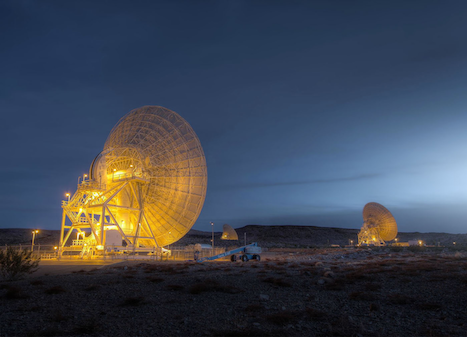Q: What frequencies does NASA use to communicate with spacecraft? Are these the same frequencies used to send back TV signals from the Moon? How are the signals affected by loss and degradation?
Anonymous
A: The Deep Space Network, or DSN, is NASA’s international array of giant radio antennas that supports interplanetary spacecraft missions, plus a few that orbit Earth. The DSN also provides radar and radio astronomy observations that improve our understanding of the solar system and the larger universe.
The DSN is operated by NASA’s Jet Propulsion Laboratory, which also operates many of the agency’s interplanetary robotic space missions. The DSN consists of three facilities spaced equidistant from each other — approximately 120° apart in longitude — around the world. These sites are near Barstow, California; near Madrid, Spain; and near Canberra, Australia. The strategic placement of these sites permits constant communication with spacecraft as our planet rotates. Before a distant spacecraft sinks below the horizon at one DSN site, another site can pick up the signal and carry on communicating.
One of the frequencies we use is the same NASA used to beam TV signals from the Moon. That’s called S band (2–4 GHz), but we also use X band (8–12 GHz) and the Ka band (27–40 GHz). The earliest widely used DSN frequency was S band. Later added were X band and Ka band, which can send much more data per second. In the future, the DSN will support optical communication in the infrared frequency band.
These communications signals can be extremely difficult to receive, due to the relatively low power used by spacecraft and the great distances the signals must travel. The received power drops by the square of the distance traveled. The signal can also become degraded by many sources, such as solar system background noise or interference, interference from passing through either Earth’s or another planet’s atmosphere, and by noise introduced by the receiving system. To compensate, we use very large antennas — the largest is 230 feet (70 meters) in diameter — with precise antenna pointing, cryogenically cooled low-noise amplifiers, sensitive receivers, and computer code designed for error detection and correction.
Michael Levesque
Deep Space Network,
Jet Propulsion Laboratory,
Pasadena, California










